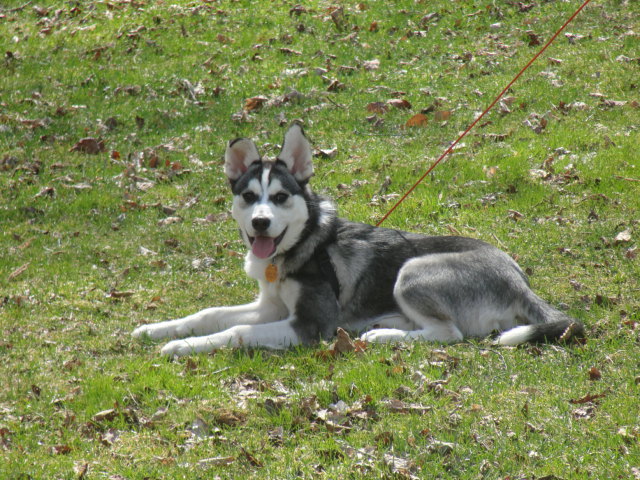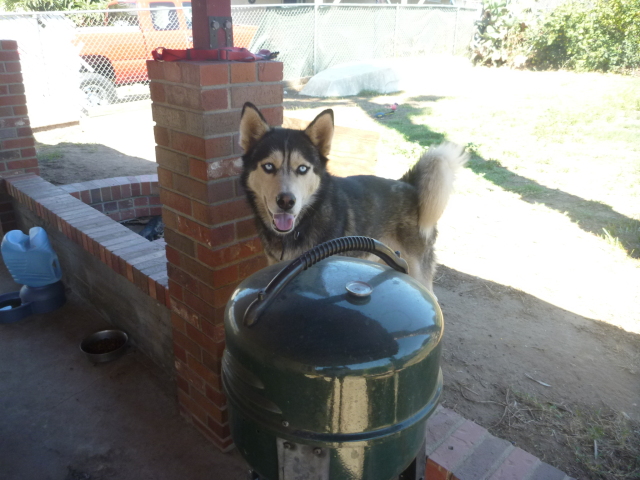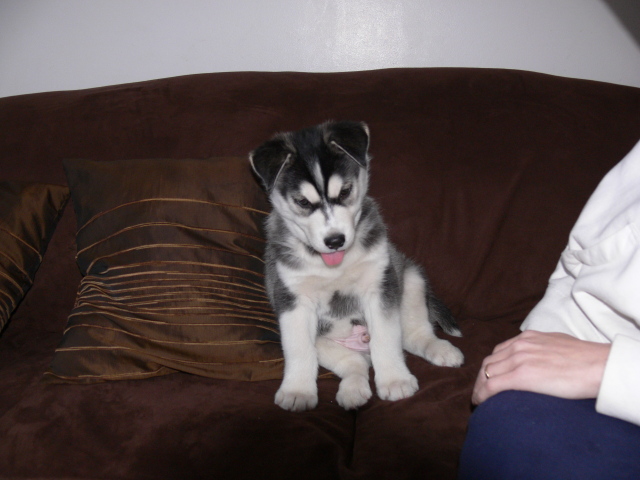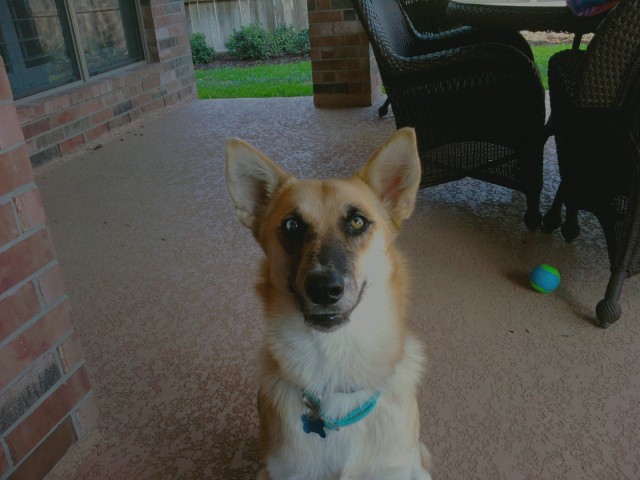QuestionHey Marcus,
im still in the process of training my dog.
so far she sits EVERY time i ask and she comes 90% of the time when i call her.
i cant get her to STAY or the work "NO"
potty training is going OK she still urinates in the house.
but i try to take her out every while to play and use the restroom.
my questions are...
how can i teach her the word NO?
how can i teach her to stay?
also is there a certain month they should learn certain things?
another question is i was thinking of getting one of those collars for my husky so when she trys to pass a certain area that is forbidden it lightely shocks her so she knows not to go in that dirrection. do you have a better way to keep her away from certain areas? or is that ok for me to get?
thanks,
Richard.
AnswerTeaching NO:
Really, the dog should learn it naturally, and the dog will learn it by the sound of your voice, your body language and the command in it. Your best bet is to make sure that you are firm, loud, and sharp in the "NO!". Also, moving quickly toward the dog to grab it or move it away from whatever it was doing will help reinforce the "NO!". Over time, you'll notice the dog will retreat from certain behaviors as you say "NO!" and move toward it - never having to get there. Then, over more time, it's just the "NO!" and now, for example, with my dogs, I can usually very quietly say "No" and they know exactly what I'm meaning.
Teaching Stay:
One of the more difficult things to do, you're best bet is to make sure you have a reliable sit and down command, and then you can begin working the two stays (sit-stay, and down-stay). Down-stay is easier to hold longer, but some dogs really don't like the down. Other's do a sit-stay that they want to turn into a down-stay. In any case, the training method is the same. Keep in mind that your first job is to teach the dog to be able to understand that "STAY" means "don't move." And after you are confident that the dog understands it, then you let the dog start trying it on his own.
First, start with the sit or down command. Then, command "Stay!" I like to use a hand signal with it of bringing the palm of the hand sharply to the dog's nose. Not hitting it or anything, but just the hand a few inches in front of the dog's nose as a kind of stop sign.
Now, at the opening stage of teaching this command, after giving the command - hold the dog in the position. Physically make sure that the dog is unable to move from that position. Hold for 2 or 3 seconds, and then, before the dog squirms too much and gets out of the position, then give the release command (I use "Free!" - usually in a very happy tone) and let go of the dog. Make sure to make the release positive, and congratulate the dog - it stayed. Continue this for about 10-14 days. Some dogs get it, some dogs fight it, and sometimes you may need to continue for closer to three weeks, but this is rare. Before moving to the next stage, you should have the dog in the "stay" for 30 seconds to a minute reliably (still holding him) before he gets too feisty and starts wanting to get up. You should also start to see the dog begin to wait under your grip, basically biding time until you let go him and say "Free!" Once the dog starts doing this for that long, then you can move on to stage 2 - free will.
Now that the dog has a grasp of the commands (stay means he has to wait while you hold him, and free means he can get up), now you let him decide if he wants to obey the commands and you reteach him a small part of it. Now, when you give the stay command, you stay close to him, but you don't physically hold him. Now, you wait and if he gets up, correct him back to the staying position(usually a quick leash pop - up for a "Sit-stay" and back down to the ground for a "down-stay"). Usually, it only takes a couple of times and the dog gets that the "Stay" command didn't mean "my owner holds me" but rather "oh! I'm not supposed to move." A verbal correction with the physical correction also works really well (back to that "NO!").
When you move to this stage, reset your time frame expectations. Get back to getting him to stay for 2 or 3 seconds. Work this slowly and build up to staying for progressively longer time periods until you are at several minutes. Now, my dogs can stay 20-30 minutes or more. Keep in mind that it's easier for the dog to stay longer in a "down-stay" rather than a "sit-stay". I rarely use the Sit-stay now, but that's personal preference.
As for time frames of learning things, well - it completely depends on the dog, amount of time spent training, age of the dog, etc. As a whole, the dog should be able to pick up new commands in a week or so (not reliably, but if you are working 2-3 times per day for even just 20 minutes at a time, the dog should understand the idea of the command in a week or so). Pups take a little longer, and older dogs can as well, but a week is generally about what it takes to learn a new command.
As for the radio shock collars, I don't recommend them with Sibes - their thicker fur and high pain tolerance often make them ineffective.
Hope that helps!

 2 12 week old Husky brothers play/fighting
QuestionJasper & Sigmund
QUESTION: Two weeks
2 12 week old Husky brothers play/fighting
QuestionJasper & Sigmund
QUESTION: Two weeks
 My 4 mo. old puppy
Question
Arkkan 4mo.old
I recently brought home my Sibe
My 4 mo. old puppy
Question
Arkkan 4mo.old
I recently brought home my Sibe
 My husky and other dogs.
Question
Kona
My siberian husky, Kona, is 2years old an
My husky and other dogs.
Question
Kona
My siberian husky, Kona, is 2years old an
 Husky Puppy Weight
Question
Zeus The Puppy
Hi we got Zeus at 6 1/2 weeks o
Husky Puppy Weight
Question
Zeus The Puppy
Hi we got Zeus at 6 1/2 weeks o
 Wondering if my rescued husky mix is not a mix
Question
Ace
I adopted a 7 month old rescue abou
Wondering if my rescued husky mix is not a mix
Question
Ace
I adopted a 7 month old rescue abou